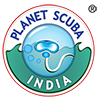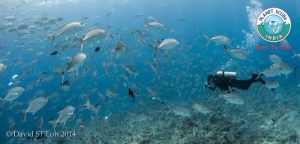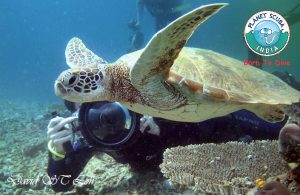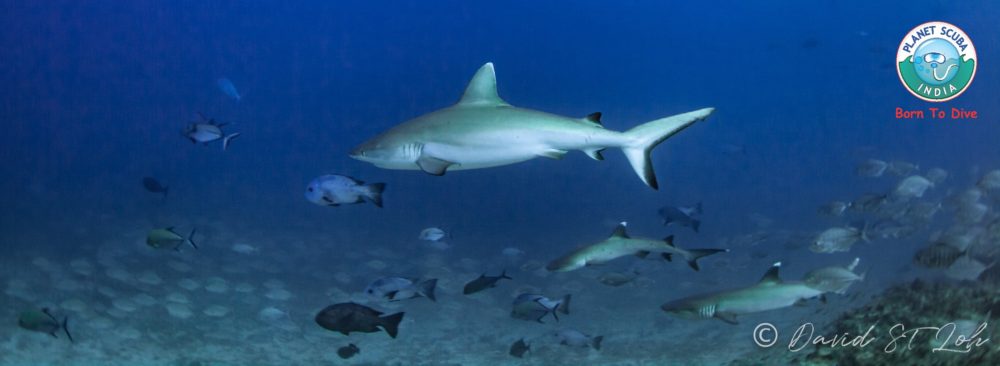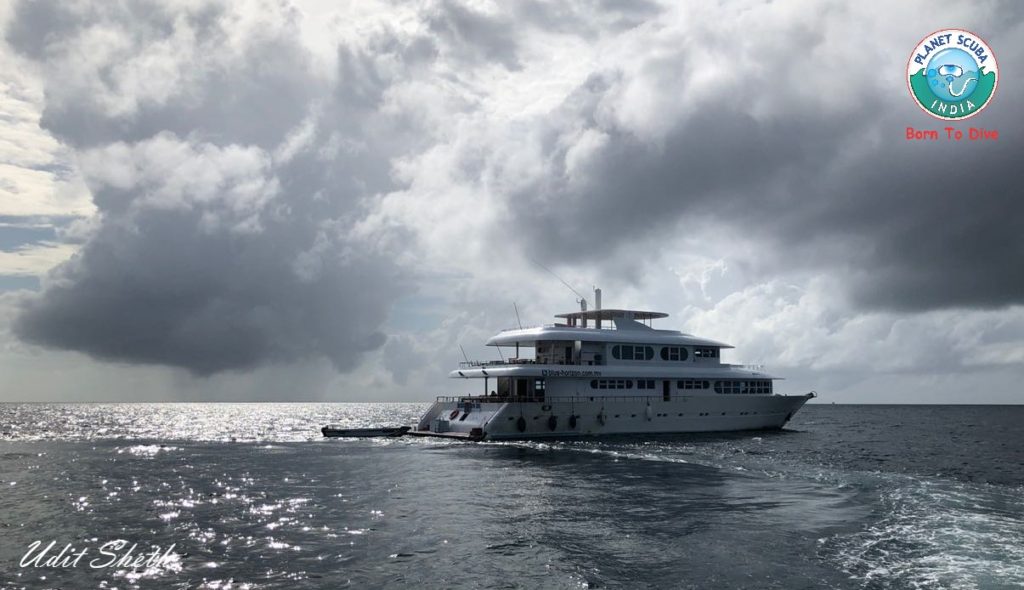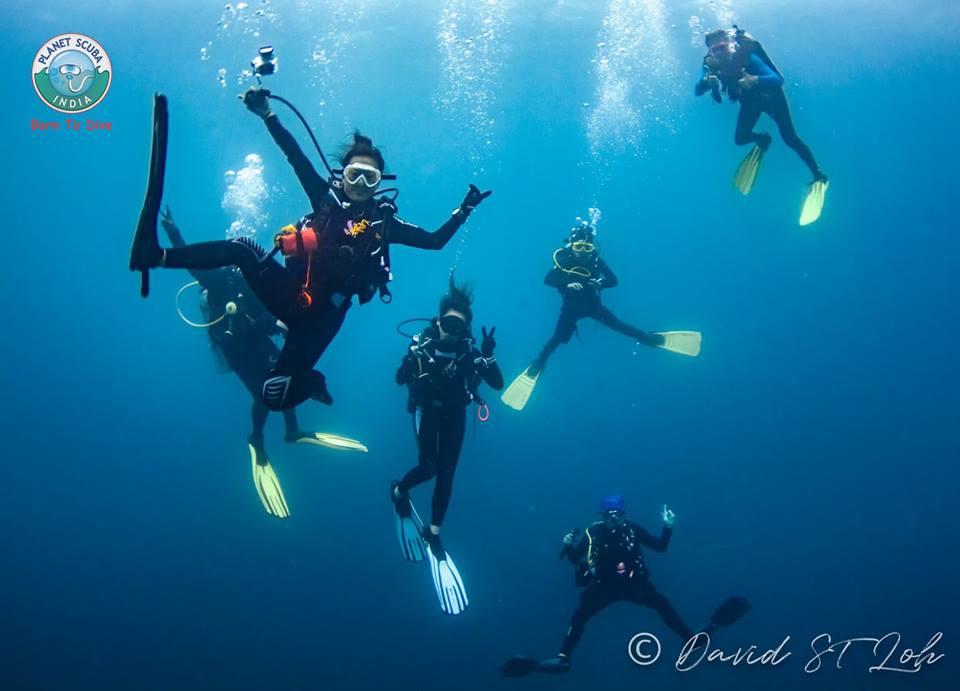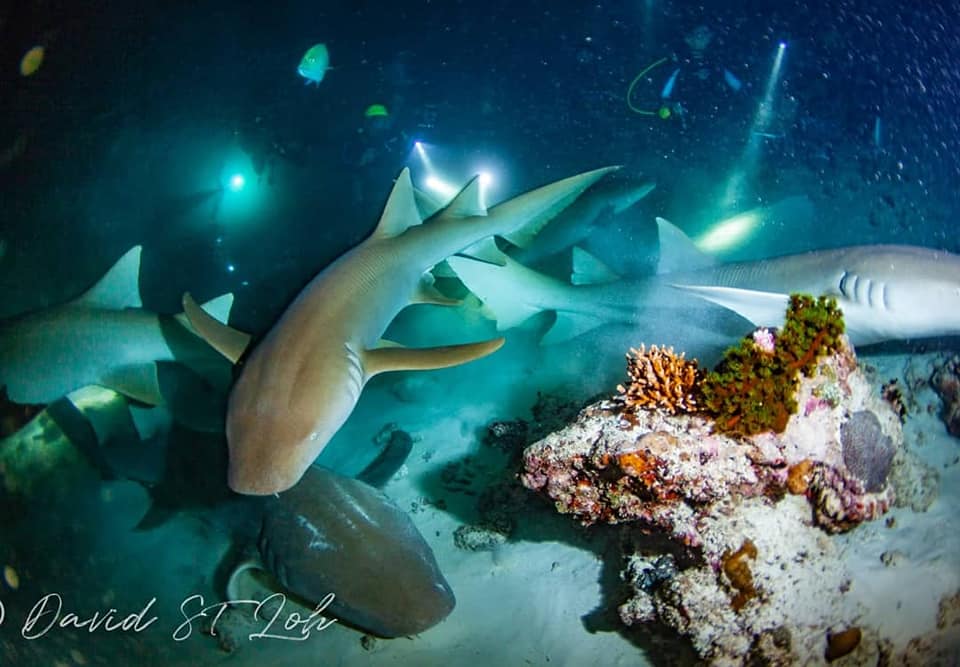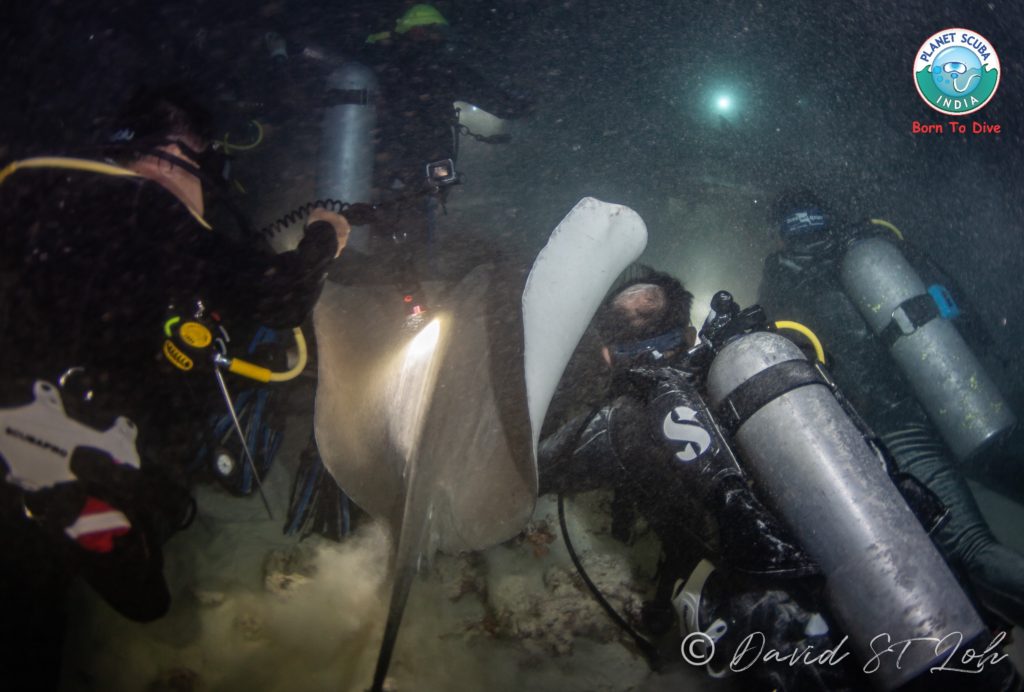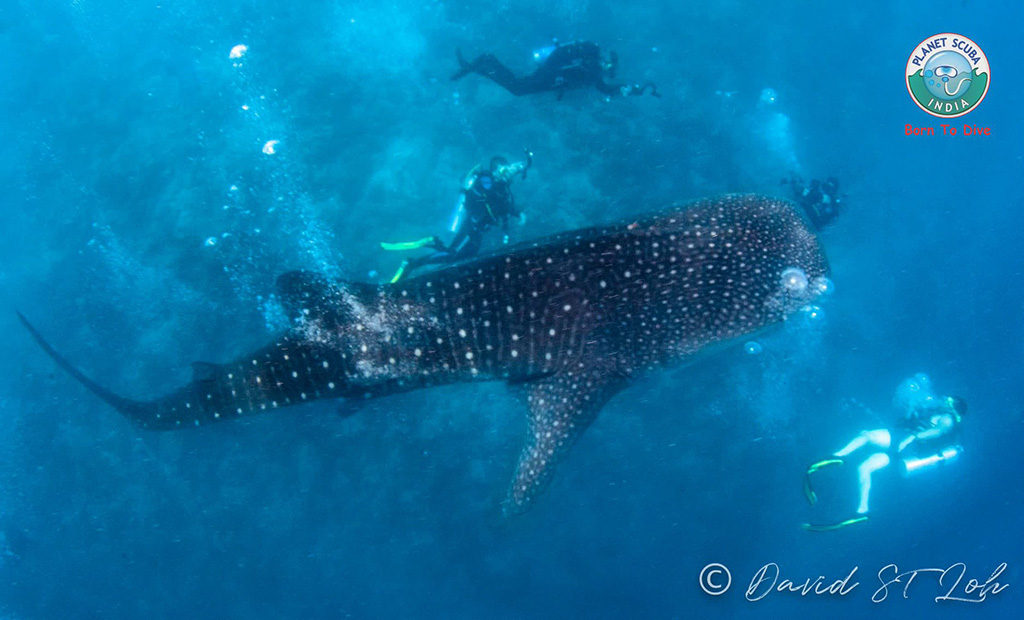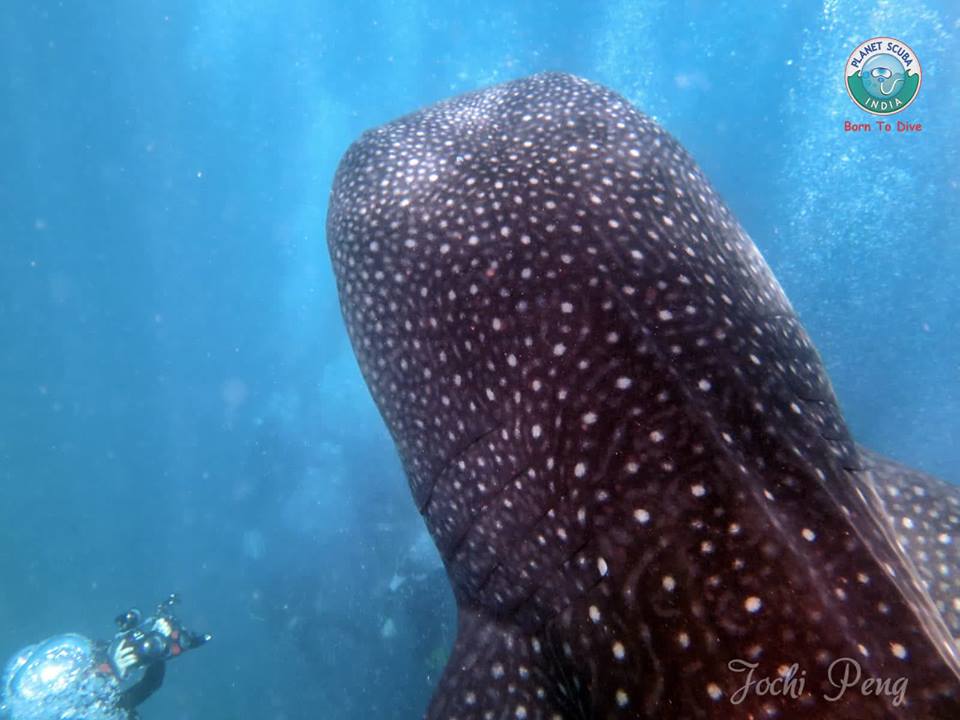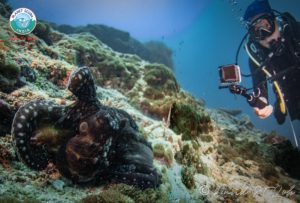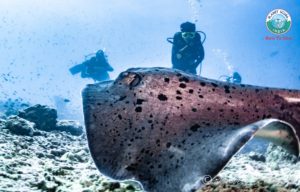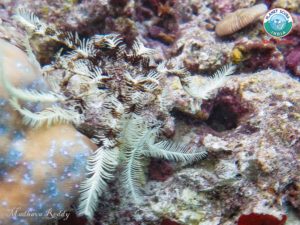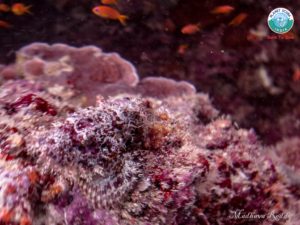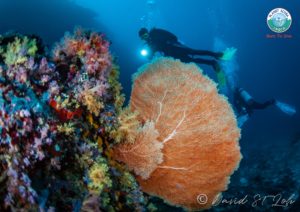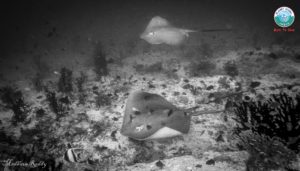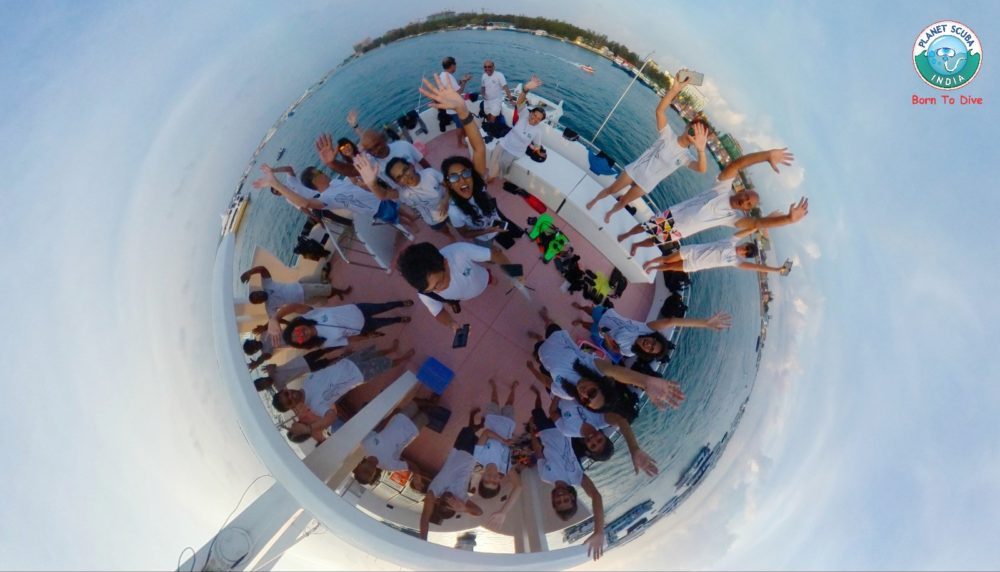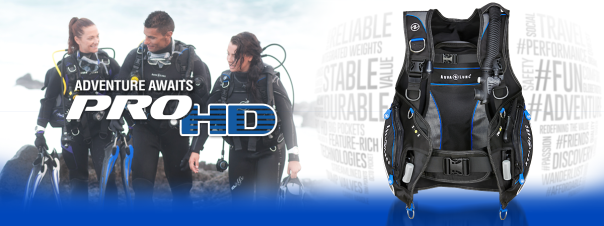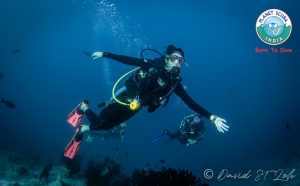
Why would you want to restrict your holidays to just 30% of the earth’s surface, when you can go scuba diving in India and explore the rest of the world as well?! Besides, just think about all those amazing Instagrammable images you will click. The envious faces of family, friends and co-workers. And did we mention that the boss can’t get in touch with you when you’re underwater. Yes, it’s time to tick diving off your bucket list. Especially since you can learn scuba diving in India in your very own city.
1. Learn scuba diving in India & explore the most fascinating place on earth
Fancy yourself a traveler? As a scuba diver, you can claim exploration of the seas as well. Maybe, even discover a spectacular dive site! We kid you not. This is a strong possibility when scuba diving in India since only one per cent of the country’s 8,000 km coastline has been explored.
2. Escape to a tranquil world
Think of your last holiday and the number of times your boss or that pesky colleague sent you a message asking for some document or email they simply could not locate. Now think about your upcoming trip scuba diving in India and how you can claim no network underwater. No phone calls, no messages, no emails. Just eat, sleep, dive, repeat!
3. Experience a world both old and new
If you are a history buff, just think of the shipwrecks, underwater monuments and other fabulous sites you could explore when diving in India. The 9,000-year-old lost city of Dwarka in Gujarat, for example. Or the shipwrecks at Minicoy, Lakshadweep. Or the diving near an active volcano at Andamans. Every dive has something new and unique to offer, be it that interesting fish you’ve never seen before or the shipwreck you would love to explore.
4. Click the best holiday pictures
A photograph of you clicking a photograph of a turtle. Images of the most scenic beaches. White sands, blue seas, colorful coral, curious fish, your own picture underwater… Counting those Insta likes already?!
5. Make new friends
Diving brings together people from across the globe. People who share a common passion for the world below the waves. Besides, there is no chance you see a 5-meter shark and not come back to the boat and talk about it. Not only will be go back from your scuba diving holiday with new experiences, but also a new set of friends and a better understanding of different cultures.
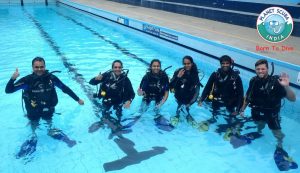
6. Learn scuba diving in India in your own city
Yes, you read that right. You can learn scuba diving in India in your own city. Even if it is a land-locked one like Bangalore. The theory and confined water sessions of the PADI Open Water Diver course can be completed before you head for your adventurous holiday. So you don’t need to spend precious vacation hours in a classroom. Instead, you can giant leap into the blue and discover the last unexplored frontier. You can even advance your skills with courses like the Advanced Open Water Diver, Enriched Air Diver and other PADI specialties.
Ready for your scuba diving in India adventure? Get in touch with us at holidays@planetscubaindia.com or fill in our online contact form, and we’ll get right back to you.
Best Scuba diving in India: the top dive sites
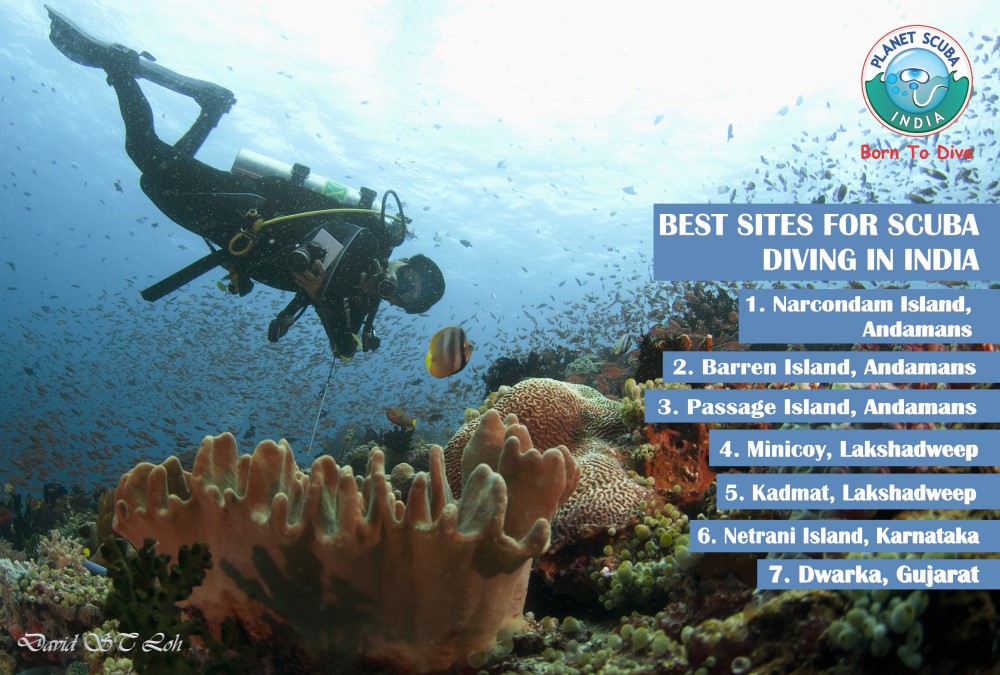
Here are seven of the best sites for scuba diving in India Planet Scuba India recommends that should be on your bucket list this year. Scuba diving in India has explored less than one per cent of the country’s more than 8,000 km coastline. By virtue of their geography, the archipelagos of Lakshadweep and Andaman and Nicobar are the gems of world class diving. Followed close on their heels by Dwarka. The lost city of legend that could well rewrite history as we know it! And then, there is the heart-shaped island in Karnataka. Adored by divers for its tranquil waters and rich marine life. From whale shark sightings to macro photography, scuba diving in India offers a plethora of options, for both beginners as well as advanced divers.
1. Narcondam Island, Andamans
Ooh La La—a quirky name for a site for scuba diving in India. But then, everything about Narcondam prompts the expression. Located around 256 km to the northeast of Port Blair, this volcanic island in the Andamans is covered in dense forests. Its lush green peak that rises from brilliant blue waters forms a rather picturesque contrast. But it is the panorama below the waves that interests scuba diving enthusiasts. Especially since it was none other than the father of scuba diving, Jacques Cousteau, who put this island on the diving map.
Scuba diving sites: Ooh La La and Lighthouse Reef. These scuba diving sites at Narcondam feature rocky ledges and steep slopes. These are replete with colorful hard and soft coral, huge barrel sponges and large sea fans. The clear waters offer visibility of up to 25 meters. Depths here exceed 30 meters.
Marine attractions: Schools of bumphead parrotfish, surgeonfish, fusiliers, snappers, angelfish and a variety of brightly hued reef fish. The deep waters also increase sightings of pelagics. Yes, one can expect to see manta rays, eagle rays, Napoleon wrasses, tunas, big-eyed travellies and grey reef and whitetip sharks.
2. Barren Island, Andamans
Scuba diving near an active volcano! The mere thought is enough to give you an adrenaline rush. Now couple that with the fact that the volcano dates back 1.6 million years. Packed your diving gear yet?! Barren Island in the Andamans lies on the edge of the India-Burma tectonic plates. And has earned a reputation worldwide for having some of the best sites for scuba diving in India. The underwater world here is a series of juxtapositions: clear blue waters, dark black soil and colorful reef life. Not to forget that surface intervals offer splendid sights of a smoking volcano.
Scuba diving sites: Purple Haze. Thus named to reflect a 50-meter-wide area covered in soft purple corals. Black Magic has sand divers and moray eels peeking out of a bed of black sand. Other scuba diving sites here include Manta Point, Coral Garden, Auditorium & Gallery and Manta Bay. You can spot that manta ray circling 25 meters away. Most dive sites have depths of more than 30 meters.
Marine attractions: Manta rays! Yes, we know we mentioned them already. Moray eels, turtles, octopus, whitetip and blacktip sharks. Also, barracudas, travellies, dogtooth tuna, needlefish, parrotfish, and a multitude of reef fish. Oh, and whale sharks are occasionally spotted at some of the dive sites here too.
3. Passage Island, Andamans
High on our list of best sites for scuba diving in India is the uninhabited Passage Island. Here the waters attract pelagics aplenty! Located about 53 km south of Port Blair, this island boasts an offshore pinnacle called Fish Rock. A scuba diving site that, true to its name, is teeming with fish life.
Scuba diving sites: Barrel sponges, large orange fan corals and clusters of soft corals cling to the rocky reef of Fish Rock. This dive site slopes down to more than 30 meters.
Marine attractions: Bumphead parrotfish crunch on corals. While barracudas and surgeonfish swirl around in schools. Yellowback fusiliers, bluestripe snappers and bannerfish paint the waters in their vibrant hues. Moray eels peek out from under rocks. The bolder ones, at times, can be seen draping themselves on fan corals. Also making an appearance are groupers, turtles, rays, Napoleon wrasses and dogtooth tuna.
4. Minicoy, Lakshadweep
Every diver we know of gets all dreamy-eyed about scuba diving in the Maldives. Enter Minicoy, the island located at the southernmost tip of the Lakshadweep archipelago. Which is just an Eight Degree Channel separation from the Maldives, as per the Admiralty Charts. Minicoy offers the most spectacular sites for scuba diving in India. Not least of which are the three large shipwrecks at around 8 meters depth on the island reef. Allegedly, it was these shipwrecks that lead to the construction of the lighthouse on the island in 1885. Other tourist attractions on this crescent-shaped island include the large lagoon on the western side and the tiny islet on the southern tip called Viringili.
Scuba diving sites: The SS Hoechst and other shipwrecks are best described as underwater museums. Not least because they are home to a large number of fish species. Manta rays can be spotted at dive sites like Ragganmathi, Mulimatti and Rabberufarai during September and October. While Bose Point, Murambu and Boduhavaligang offer great marine biodiversity.
Marine attractions: Whitetip and blacktip sharks, rays, turtles, jacks, barracudas, tuna, sweetlips, large groupers, red snappers, black snappers, bigeye trevallies, Napoleon wrasse, humphead parrotfish… The list simply goes on and on.
5. Kadmat, Lakshadweep
This idyllic island in the Lakshadweep archipelago is just 8 km long and 550 m wide. That too at its broadest point! Kadmat promises one of the most memorable holidays for scuba diving in India. Thanks to its shallow calm lagoon, pristine beaches, crystal clear waters and rich marine life.
Scuba diving sites: The Wall, covered with soft corals, is one of the most beautiful reefs. Schools of tuna and barracuda vie for your attention. While sharks whiz past and turtles swim by at a languid pace. Other dive sites here are North Cave, Potato Patch and Shark Alley. Visibility in these waters ranges from 20 to 50 meters.
Marine attractions: Sharks, eagle rays, turtles, tunas, jacks, sweetlips, groupers, moray eels, lobsters, batfish, fusiliers, wrasses… The dive sites here are great for macro photography too.
6. Netrani island, Karnataka
The heart-shaped island is possibly one of the most adorable destinations for scuba diving in India. Netrani, located off the coast of Karnataka, is a small, uninhabited island. A rocky outcrop emerging from the Arabian Sea, approximately 10 nautical miles from Murudeshwar. The temple town that is home to the second largest Shiva statue in India. It is rated as one of the best places on the west coast for scuba diving in India. Mostly because the tranquil waters here are known to throw up unexpected surprises.
Scuba diving sites: The Nursery teems with juvenile fish of various species. While T55 is a great place to spot groupers, travellies, jacks and a sunken torpedo. Grand Central Station, The Abyss, Dini’s Delight, Cul de Sac and Aladdin’s Cave round up the list of scuba diving sites at Netrani. The clear waters offer visibility of 15 to 30 meters. Depths range from 10 to more than 30 meters.
Marine attractions: Butterflyfish, barracudas, batfish, groupers, parrotfish, surgeonfish and snappers dart into camera range. At The Abyss, cruising pelagics are a common sight. The seagrass at Cul de Sac is home to different species of goby and their cleaner shrimp.
7. Dwarka, Gujarat
Imagine scuba diving in India at a place that could rewrite world history. We are talking about the over 9,000-year-old lost city of Dwarka! The legendary dwelling place of Lord Krishna. For this reason, Dwarka finds its place on the our list of the best sites for scuba diving in India. While findings by the Underwater Archaeology Wing of the Archaeological Survey of India only reveal that ancient structures have been discovered, along with 30 copper coins. The exact date of the structures and coins are yet to be discerned.
Scuba diving sites: Tall sea sea fans, hydroids, sea anemones, the underwater city offers a varied collection of corals.
Marine attractions: To think that whale sharks can be spotted so close to home. Oh, and turtles and dolphins sightings are common in the Gulf of Kutch. You can also expect to spot octopus, pufferfish and other species during low tides at the marine sanctuary here.
The best diving holiday of 2018 in Magical Maldives
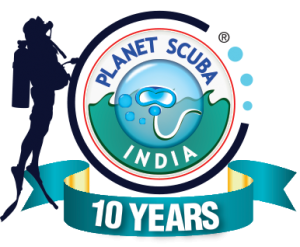 What happens when on the initial day of your scuba diving holiday itself you see manta rays and dozens of white tip and grey reef sharks? Well, the stakes just get higher for the dive guides. But then again, this is the Maldives! The tropical paradise made up of 26 atolls, with some of the best scuba diving sites in the world. And every dive here is simply spectacular.
What happens when on the initial day of your scuba diving holiday itself you see manta rays and dozens of white tip and grey reef sharks? Well, the stakes just get higher for the dive guides. But then again, this is the Maldives! The tropical paradise made up of 26 atolls, with some of the best scuba diving sites in the world. And every dive here is simply spectacular.
Scuba diving holiday in Magical Maldives
For Planet Scuba India, this was our third trip to the Maldives in 2018. And, come to think of it, it seemed like each diving holiday was trying to supersede the previous one. This time around, our liveaboard of choice was the Horizon 3. From October 7-13, this luxury liveaboard was home to 23 guests of different nationalities—Indians, Singaporeans, Taiwanese, Malaysians. Including two divers from India completing their PADI Open Water Diver course. They then went on to complete their PADI Advanced Open Water Diver course, along with three other scuba divers from India.
This diving holiday also had a couple of non-divers (who enjoyed themselves just as much, if not more) and some of the best photographers. You need only take a look at the pictures to nod in agreement.
It was six fun-filled days of eat, sleep and dive! And, of course, swapping of hilarious, unforgettable scuba diving adventures.
Here are some of the highlights of one of our best diving holidays in the Maldives.
The Manta show
First dive of the day at Lankan Manta point. This dive site, at the southeastern outer reef of Lankanfinolhu Island, is one of the most popular cleaning stations for manta rays in North Male Atoll. And, as luck would have it, on the day of our dive, the manta rays showed up in all their magnificent glory. We took a giant stride off the dive dhoni, descended a few meters, and gasped in awe (well, as much as one can gasp with regulator in mouth), as a manta ray elegantly swam past. Not knowing then that this was just a prelude of what was to come a few minutes later. Our dive guide led us to the coral blocks of the cleaning station. And, lo behold, heads swiveled in every direction as mantas glided in, out, and around in circles.
Here’s the thing about cleaning stations: they are a riot of colors. It is not just the mantas vying for attention but brightly hued cleaner fish, vibrant corals, and a motley of sea creatures. There is just so much to take in that you rue the fact that your neck isn’t able to turn more than 90 degrees. Just how are you supposed to see the cuttlefish whooshing past behind your back, when you eyes are so intensely trained on the spectacular subjects in front of you?!
Mantas come calling
Subjects that came to visit us later that night. Bang at dinnertime! Who cares about food when you can watch a manta ray circle around the back of your boat instead. Well, to be fair, it was dinnertime for the mantas too. And one somersaulted away, mouth agape, sieving marine organisms out of the water and into its stomach. Round and round it went, as 23 heads (more if you count the crew) stuck out of the sides of the boat watching in fascination. That is, till it had had its fill and glided away as surreptitiously as it had appeared.
Shark tale
Bathala Maaga Kanthila, North Ari Atoll. Even though this dive site, which we visited right after the underwater manta ray spectacle, had grey reef and white tip sharks. Not to forget, schools of yellowback fusiliers and a huge Napoleon wrasse that stole the show. It was the dive at Fish Head at North Ari Atoll that remains etched in our memory. Perhaps it was the story that did it for us. As our dive guide, Marko, told us during the briefing that at one time this was a famous fishing spot. But when the fishermen reeled in their catch, all they got was the heads of the fish. The sneaky sharks had eaten up the rest. Or perhaps it was the dive site itself. With its multiple ledges and picturesque overhangs replete with fan corals and abundant fish life.
Again, just a few meters and a few minutes into the dive, we spotted sharks right below us. Our dive guide took us on a detour, around one ledge and onto another below it. Having us swim stealthily to not disturb the unfolding drama. Sharks darted around, remoras in tow, while parrotfish hid in crevices in corals. And clownfish peeked out of anemones. Crustaceans moved a centimeter at a time to not be spotted.
It was 45 minutes of spying on sharks. Eyes wide in wonderment; cameras trained at the action. Grey reef sharks and white tip sharks, and also barracudas—all the predators at their A-game. Little wonder then that Fish Head, also known as Shark Point or Mushimasmingili Thila, is listed as one of the most famous dive sites in the world.
Night dive with nurse sharks
We just can’t get enough of sharks. Especially on night dives. Two months later, we were back during this diving holiday too to be bumped into by nurse sharks. Simply put, the dive at Alimatha Jetty, Vaavu Atoll, offers an adrenaline rush like no other. And to think that all you need to do is kneel on a sandy bottom. While nurse sharks, stingrays, travellies whip around you foraging for food. If we had to bet on a species, it would be the crafty travellies, who gulped down the food faster than the nurse sharks and stingrays could wonder: ‘where the heck did it go?’. It was a surreal experience that no amount of photographs or videos could do justice to. Though the ace photographers did manage to capture little snippets of the frenzy.
Back at the boat after the dive, and the nurse sharks came visiting. Who would have thought that after all the action underwater, there would still be so much excitement to see them. Cameras were whipped out. Facebook Lives were posted. Frantic video calls were made to friends to gloat about what they were missing.
Whale shark frenzy
There’s only one thing in the Maldives that can get divers into the water faster than you can blink. And that’s the much-awaited sound of someone screaming: ‘whale shark’! On this diving holiday, we snorkeled to see one just after our dive at Dhigurah Beyru, South Ari Atoll; a dive site that counts whale shark encounters as one of its highlights. It was a mad jumble of divers, cameras and fins, as a lonesome whale shark swam calmly, feeding its way through the waters. Seemingly oblivious to the mayhem unfolding above, for just a glance of it.
The UMS
Colloquially, UMS, or usual Maldivian stuff, is a term used to describe everything from soft corals to giant turtles. That’s because every dive in the Maldives reveals spectacular sights and secrets. Marble rays hunting together. Octopuses, tentacles intertwined, in a sort of a love-hate dance. Mantis shrimp peeking out from its coral den. Scorpionfish in perfect camouflage waiting for its prey. Turtles gorging themselves silly on sponges. Sweetlips hanging out under overhangs. Moray eels getting spruced up by banded coral cleaner shrimps. Shoals of glassfish darting in and out of a wreck. Feather starfish climbing over hard corals. Stingrays swimming in and out of camera range. Schools of bannerfish, yellowback fusiliers, batfish, red snappers just going about their day underwater. And a liveabord full of happy divers. ‘Coz you just couldn’t ask for a better diving holiday destination than the Maldives.
Aqua Lung Pro HD BCD – A review by Dive India
By Vandit Kalia, Dive India Scuba & Resorts, Havelock Island
The Aqualung Pro HD BCD is a personal favorite of mine. I owned the previous version of this (Seaquest Pro HD, before they were re-branded) for several years and found it an extremely comfortable jacket-style BCD.
The air pockets have some structure to them, so the air bubbles doesnt move all over the place (as in some other BCDs) and robust tank support and structure in the back means that the tank stays firmly put, without rolling from side to side.
This BCD has integrated weights and one feature i consider near-essental – trim pockets. These are weight pockets located around your shoulders: by storing 1-2 kg there, you can move the center of your buoyancy higher up, which allows you to get a better, neutral trim (in other words, you can hold any body position you want – horizontal or inclined – without any issues).
 This system of distributed weights (2 integrated weight pockets and 2 trim pockets) gives you more ditch options: if you are diving in cold water where you need to plan for the contingency of dropping weights, this gives you more options as compared to a weight belt (which is all or nothing).
This system of distributed weights (2 integrated weight pockets and 2 trim pockets) gives you more ditch options: if you are diving in cold water where you need to plan for the contingency of dropping weights, this gives you more options as compared to a weight belt (which is all or nothing).
The Aqualung Pro HD BCD uses a high-denier fabric, which is more robust, more abrasion-proof and less likely to fade or look raggedy over time. Lastly, the BCD comes with more than enough lift to handle cold water diving as well (13kg of lift for a size M).
And it has more than enough D-rings and attachment points to hold all your accessories. As I mentioned earlier, I used to own this many, many years ago and sold it because i was diving with a tech harness only. In terms of price/performance, this is probably one of the best BCDs in the market today, period.
For more information on Aqua Lung Pro HD BCD, please contact us.
Mining to blame for islands to sink beneath waves
Two small islands in South Asia’s first marine biosphere reserve have sunk into the sea primarily as a result of coral reef mining, experts say.
The islets were in a group in the Gulf of Mannar, between India and Sri Lanka.
The Indo-Pacific region is considered to contain some of the world’s richest marine biological resources.
The group’s 21 islands and islets are protected as part of the Gulf of Mannar Marine National Park, covering an area of nearly 560 sq km (216 sq miles).
Fishermen had indiscriminately and illegally mined invaluable coral reefs around the islets of Poomarichan and Villanguchalli for many decades, said S Balaji, chief conservator of forests and wildlife for that region of Tamil Nadu state.
“The absence of any regulations prior to 2002 led to illegal mining of the coral reefs, which came to an end when environmental protection laws were enacted,” he told the BBC Tamil Service.
Mr Balaji said rising sea level as a result of global warming was also a factor behind the islands’ submergence.
But this was questioned by Simon Holgate from the Proudman Oceanographic Laboratory in Liverpool, UK, who said observations showed that the sea level in the region had been rising slower than the global average.
“I think that global sea level rise had little impact on the disappearance of these islands and it must be due to other reasons, possibly the mining of coral reefs,” Dr Holgate told BBC News.
Though these islets were only 3-5m (10-15 ft) above sea level, their submergence sounded an alarm bell about the danger many more small islands faced in the long run, according to Mr Balaji, who is also director of the Gulf of Mannar Biosphere Reserve Trust (GOMBRT).
The Gulf of Mannar was chosen as a biosphere reserve by the Indian government in 1989 because of its biological and ecological uniqueness, and the distinctive socio-economic and cultural profile shaped by its geography.
Most of the 21 islands are uninhabited, and the corals were mined for use as a binding material in the construction industry, as they were rich in calcium carbonate.
Rich biodiversity
The biosphere reserve is a storehouse of about 3,600 species of marine flora and fauna.
Many more wait to be studied, said Deepak Samuel, marine biologist and project associate with the Energy and Environment Unit of the UN Development Programme (UNDP). 
“The Gulf of Mannar is a unique reserve with ecosystems like coral reefs, mangroves and seagrass,” Mr Samuel said.
“It is a nursery for shell and fin fishes, which means the entire breeding and juvenile raising takes places in these three ecosystems.”
More than 300,000 fishermen depend on the Gulf of Mannar for their livelihood. It is also the dwelling place for many endemic species, notably the dugong or “sea cow”.
Studies have proved that this gulf is home to 117 species of corals belonging to 37 genera, and 13 out of the 14 species of seagrasses in Indian seas.
The area has also been famous for pearl harvesting for over 2,000 years.
According to marine biologists, a quarter of the 2,000-plus fin fish species in Indian waters are in this gulf, making it one of the region’s most diverse fish habitats.
